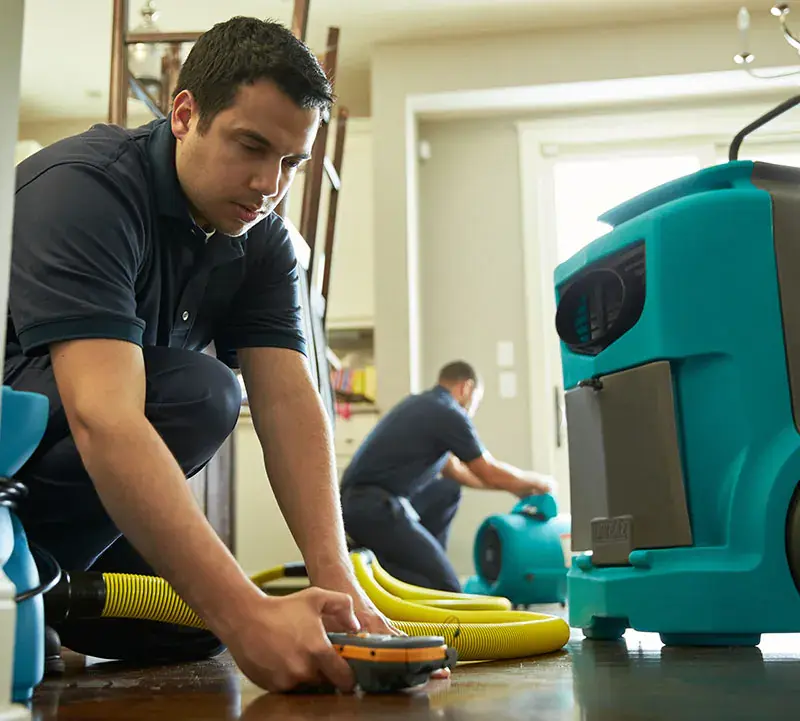Are Disaster Restoration Services Covered by Insurance?

Disasters can strike unexpectedly—whether it’s a flood, fire, storm, or any other emergency. In the aftermath, homeowners often wonder: Are disaster restoration services covered by insurance? The answer is: it depends on your insurance policy and the nature of the damage.
Most homeowners insurance policies cover certain types of disasters. Commonly covered events include fire, smoke damage, water damage from burst pipes, and storms. However, not all policies are created equal, and some may exclude natural disasters like floods and earthquakes unless additional coverage is purchased. Understanding your policy and what it includes is essential before relying on it for support with disaster restoration services.
What Are Disaster Restoration Services and Why Are They Crucial?
Disaster restoration services involve professional cleanup, repair, and restoration of properties after a significant event such as fire, flood, or mold infestation. These services are often essential for returning a property to a safe, habitable condition.
Disaster restoration typically includes:
- Water extraction and drying
- Smoke and soot removal
- Mold remediation
- Debris removal
- Structural repairs
- Emergency fire damage restoration
Time is critical. Delays in restoration can worsen the damage and increase health risks. Hiring professionals ensures the process is handled thoroughly and meets health and safety standards. This is particularly true for emergency fire damage restoration, which involves removing harmful toxins, restoring air quality, and rebuilding structural elements affected by fire.
Is Emergency Fire Damage Restoration Typically Covered?
One of the most common disaster restoration services is emergency fire damage restoration. Most standard homeowners insurance policies do cover fire damage, including costs related to smoke, soot, and structural damage. However, coverage may vary depending on how the fire started and if any negligence was involved.
For example:
- Covered: A kitchen fire caused by a cooking accident.
- Possibly not covered: A fire resulting from illegal activity or gross negligence.
Insurance providers will usually send an adjuster to inspect the damage. It is advisable to document the damage with photographs and keep all receipts related to repairs or temporary accommodations.
What About Floods and Natural Disasters?
Many homeowners assume that flood damage is automatically covered by their insurance—but this is usually not the case. Most standard policies exclude flood damage, which is why many homeowners need to purchase separate flood insurance through providers like the National Flood Insurance Program (NFIP) or private insurers.
Similarly, damage caused by earthquakes, landslides, or hurricanes may require special coverage. If your area is prone to these events, check with your insurer to ensure your policy includes these scenarios.
How Do You File an Insurance Claim for Disaster Restoration?
Filing an insurance claim for disaster restoration services involves several key steps:
- Notify your insurance company immediately: Inform them about the disaster and initiate the claims process.
- Document everything: Take clear photographs or videos of the damage. Create a list of damaged belongings.
- Secure your property: Prevent further damage by boarding up windows, stopping leaks, or turning off utilities.
- Call a disaster restoration company: Many offer 24/7 emergency services, especially for emergency fire damage restoration.
- Work with the adjuster: Be available for inspections and provide all necessary documentation.
- Keep receipts: Track all costs related to cleanup, temporary lodging, and other incidentals.
Professional disaster restoration companies often help clients navigate insurance claims. They can communicate directly with insurers to ensure necessary repairs are covered.
Are There Any Services That Insurance May Not Cover?
Even if you have insurance, some aspects of disaster restoration services may not be covered:
- Upgrades: Insurance typically pays for restoring the home to its previous state, not upgrading materials or appliances.
- Neglect-related damage: If damage resulted from a lack of maintenance—like mold due to a long-standing leak—it may be denied.
- Short-term lodging beyond limits: Many policies offer coverage for temporary housing, but this has a cap.
Reviewing your policy limits, exclusions, and deductibles is vital for knowing what to expect when disaster strikes.
What Role Do Disaster Restoration Companies Play During Insurance Claims?
Disaster restoration companies do more than clean up. They are vital allies during the insurance claim process. Here’s how:
- Immediate response: Fast action minimizes further damage and may reduce claim costs.
- Detailed reporting: They provide insurers with estimates, photos, and assessments.
- Direct billing: Many reputable companies work directly with insurance providers.
- Licensed and certified teams: Insurers often require licensed restoration professionals to qualify for reimbursement.
Particularly in emergency fire damage restoration, their role is critical. Fire can cause unseen damage to wiring, insulation, and structural supports. A certified restoration company ensures everything is repaired safely and to code.
Can You Choose Your Own Disaster Restoration Company?
Yes. In most cases, homeowners have the right to choose their own restoration service provider. While insurers may suggest companies they have agreements with, you’re not obligated to use them.
Look for companies that are:
- IICRC-certified (Institute of Inspection Cleaning and Restoration Certification)
- Available 24/7
- Experienced in emergency fire damage restoration
- Willing to work directly with your insurance provider
Doing your own research ensures you’re hiring a trusted and skilled team.
How Can You Prepare for Future Disasters?
While no one can predict when a disaster will strike, you can take proactive steps to protect your property and make the claims process easier:
- Review your insurance policy annually: Make sure you’re adequately covered for all likely scenarios.
- Create a home inventory: Record details about valuables, including serial numbers, receipts, and photos.
- Install preventive systems: Smoke alarms, fire extinguishers, water leak sensors, and backup generators can reduce damage.
- Work with local disaster restoration companies: Establish a relationship in advance so you know who to call.
Planning ahead helps reduce stress and potential financial loss when the unexpected happens.
Final Thoughts: Are You Financially Prepared for a Disaster?
To summarize: Yes, disaster restoration services are often covered by insurance, particularly if the disaster is one your policy includes—such as fire, smoke, or sudden water damage. However, not all events are covered, and policy limits can vary significantly.
Emergency fire damage restoration is typically covered by most homeowners insurance, but it’s essential to confirm the specifics with your provider. Also, remember that some damage—like mold, flood, or earthquake restoration—may require separate coverage.
If you find yourself dealing with a disaster, acting quickly, contacting a certified disaster restoration company, and working closely with your insurer will lead to the best possible outcome.



